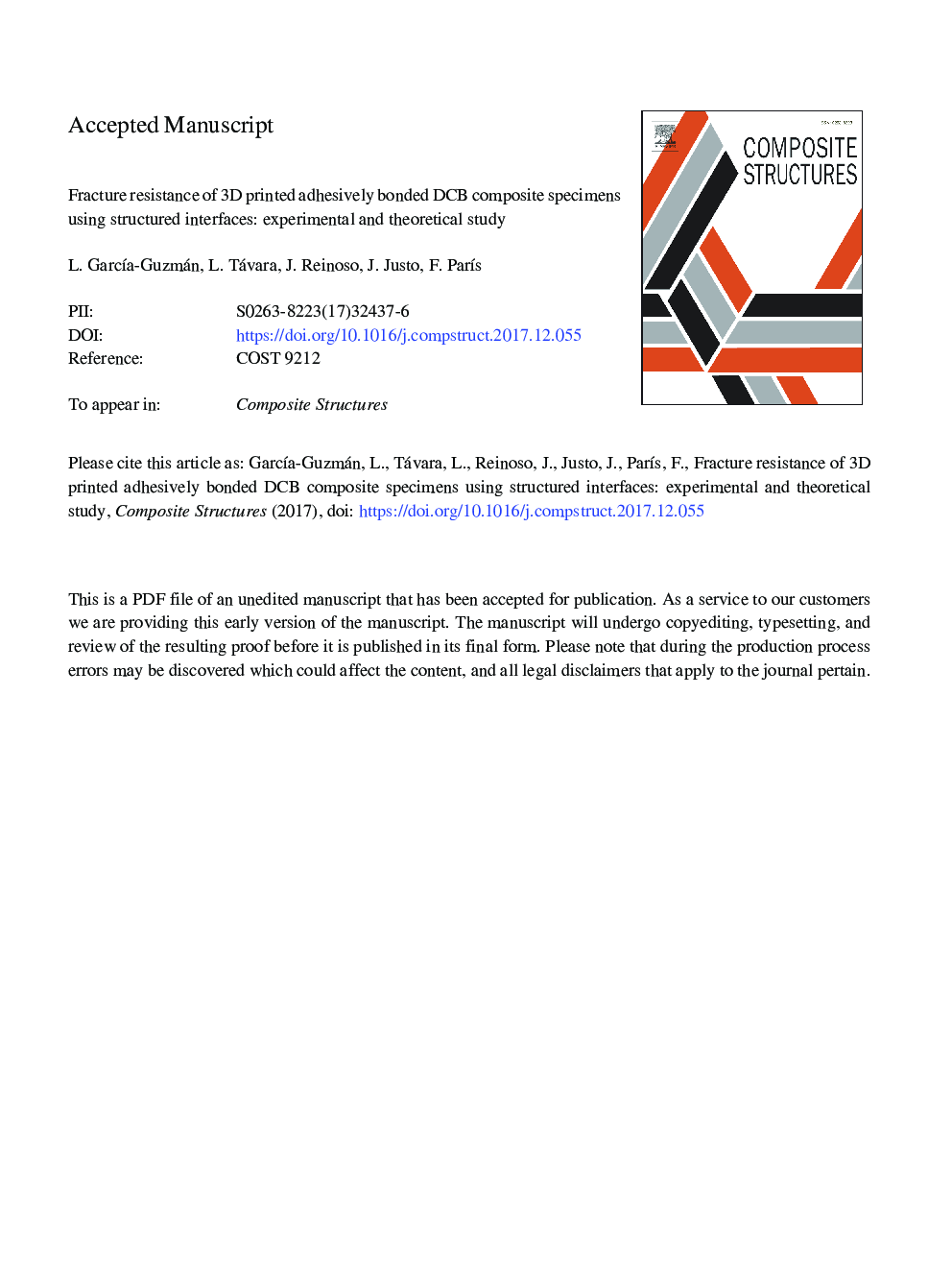| Article ID | Journal | Published Year | Pages | File Type |
|---|---|---|---|---|
| 6704036 | Composite Structures | 2018 | 22 Pages |
Abstract
The use of adhesive joints is widespread in lightweight composite structures, whereby interfaces between adherents play a crucial role in terms of the fracture resistance of the component. The appearance of recent Additive Layer Manufacturing (ALM or 3D printing) techniques opens a new paradigm regarding the design of interfaces, allowing the reproduction of nature-inspired geometric definitions to be accomplished. In this paper, the mechanical performance of double cantilever beam (DCB) specimens with trapezoidal patterned interfaces using ALM in long-fibre composites are investigated from an experimental point of view. Special attention is devoted in this study to the analysis of the influence of the aspect ratio A/λ (Aâ¯=â¯amplitude, λâ¯=â¯wavelength) of the structured interface on the fracture toughness of such specimens. The experimental data reveal a notable increase of the critical energy release rates in comparison with flat interface profiles. A map of different trapezoidal interface profiles, whose corresponding fracture properties are satisfactorily predicted by means of a novel theoretical model within a wide range of interface definitions is presented. The results obtained demonstrate the potential benefits arising from the production of bonded joints with patterned trapezoidal interfaces, which can lead to tougher and promising performances in service.
Keywords
Related Topics
Physical Sciences and Engineering
Engineering
Civil and Structural Engineering
Authors
L. GarcÃa-Guzmán, L. Távara, J. Reinoso, J. Justo, F. ParÃs,
